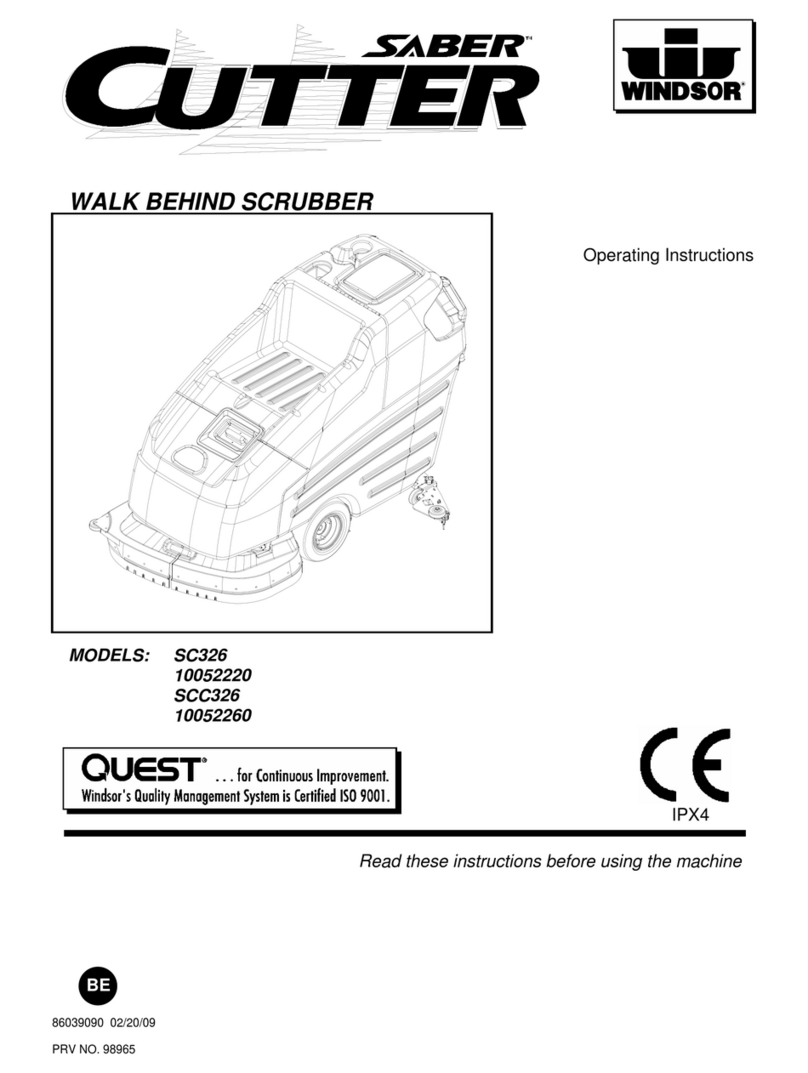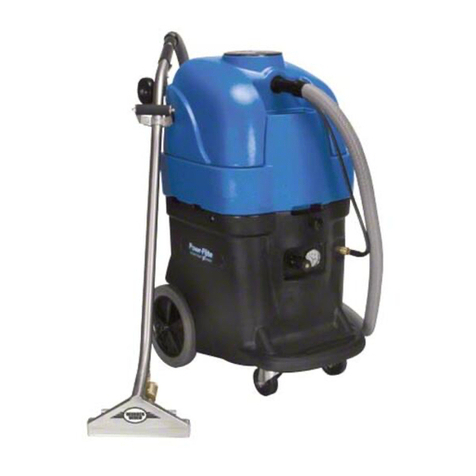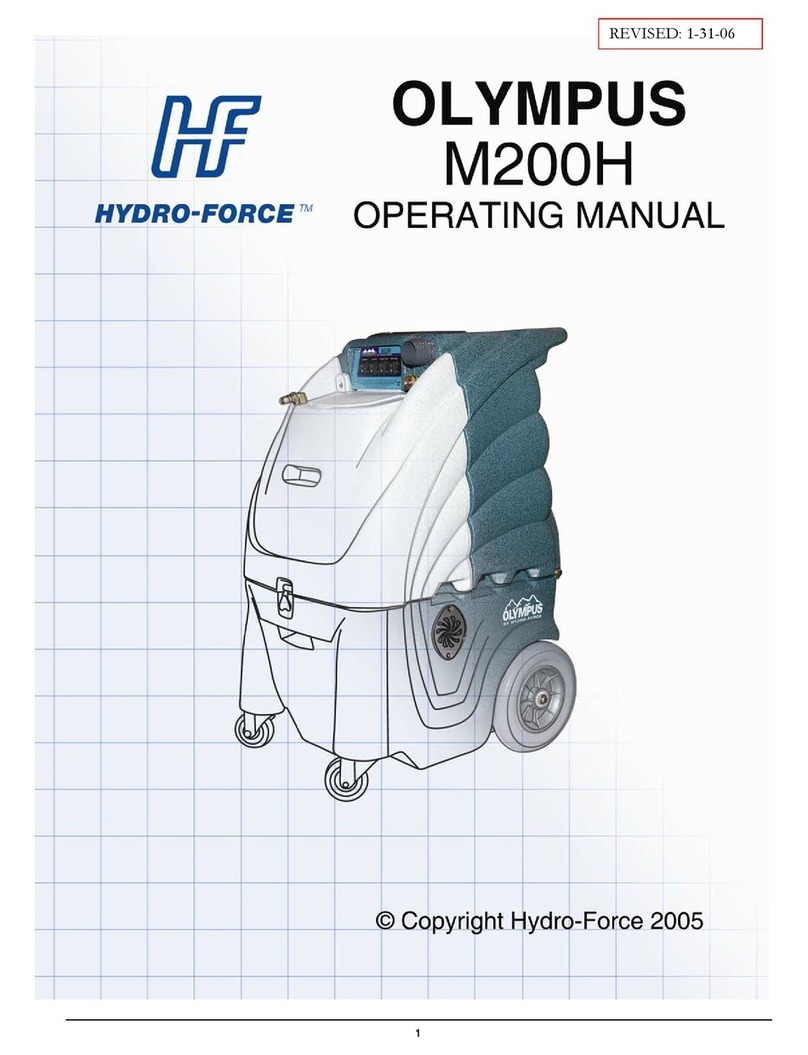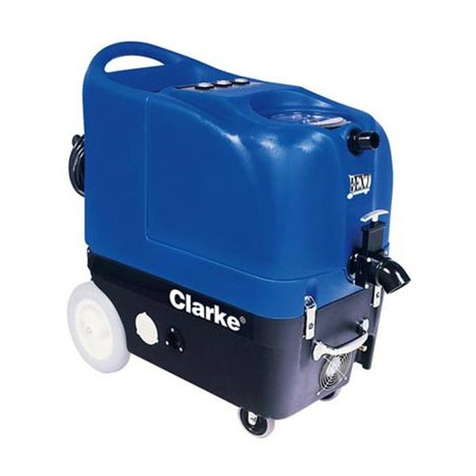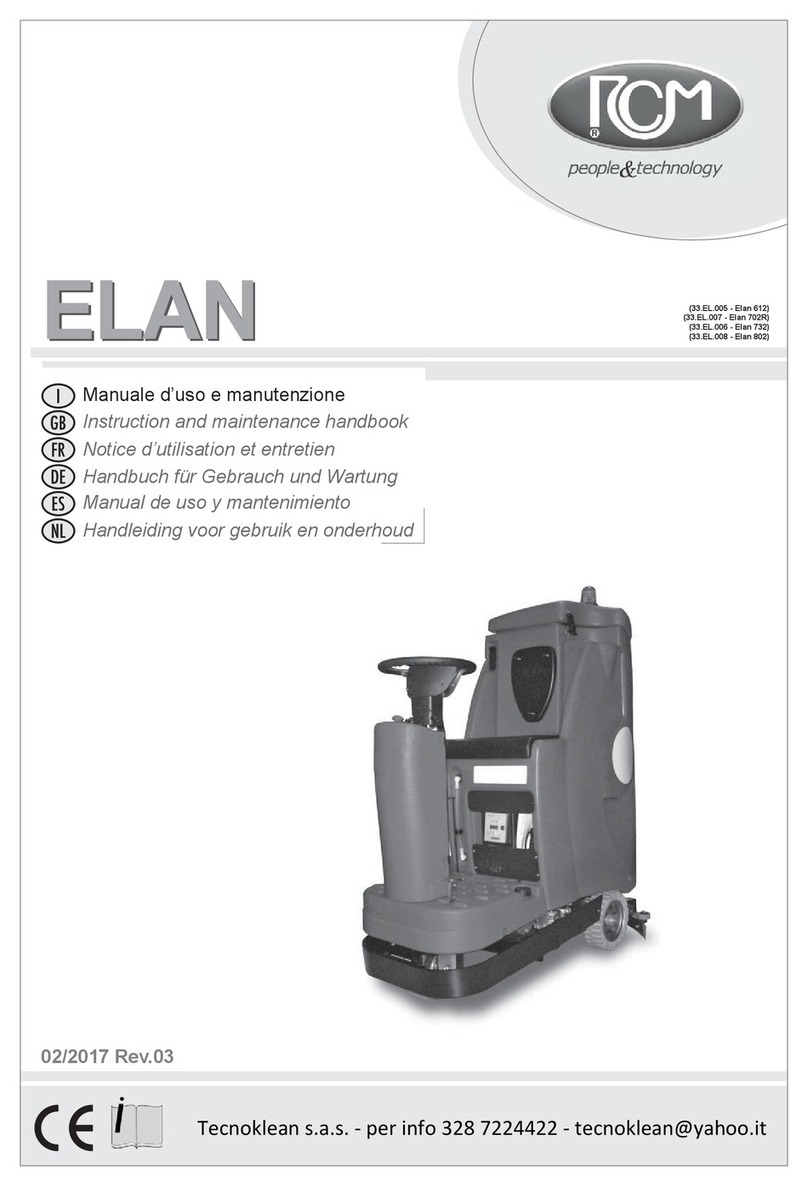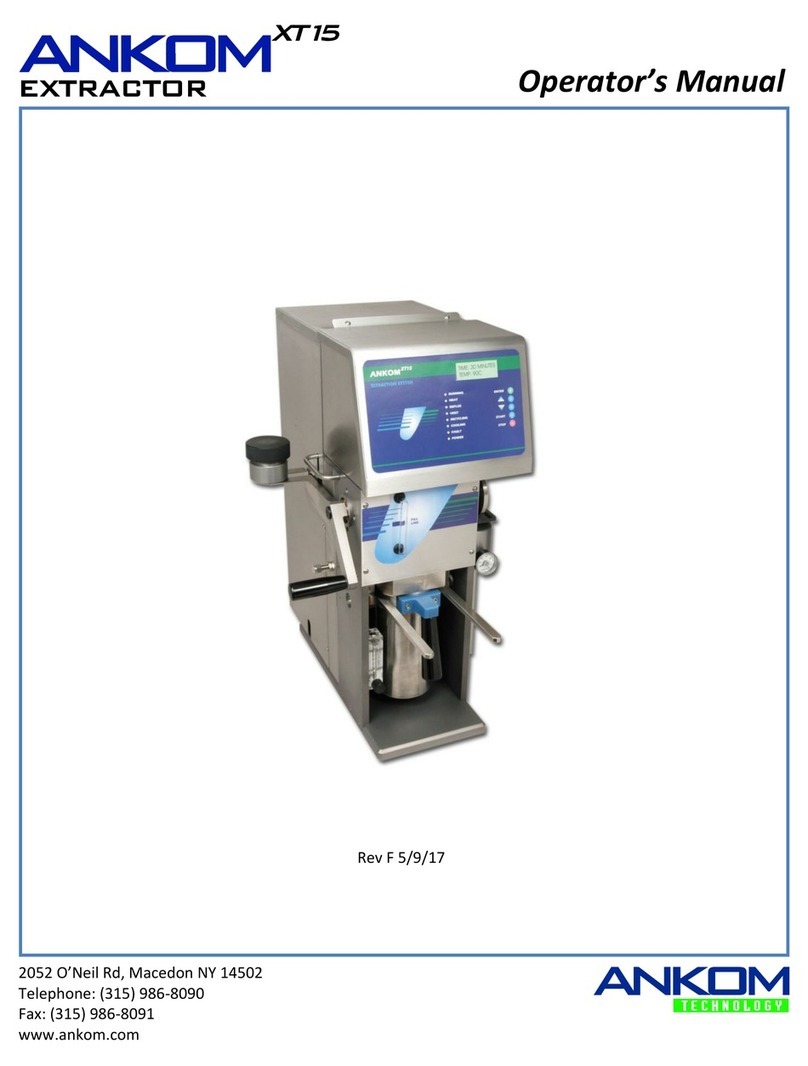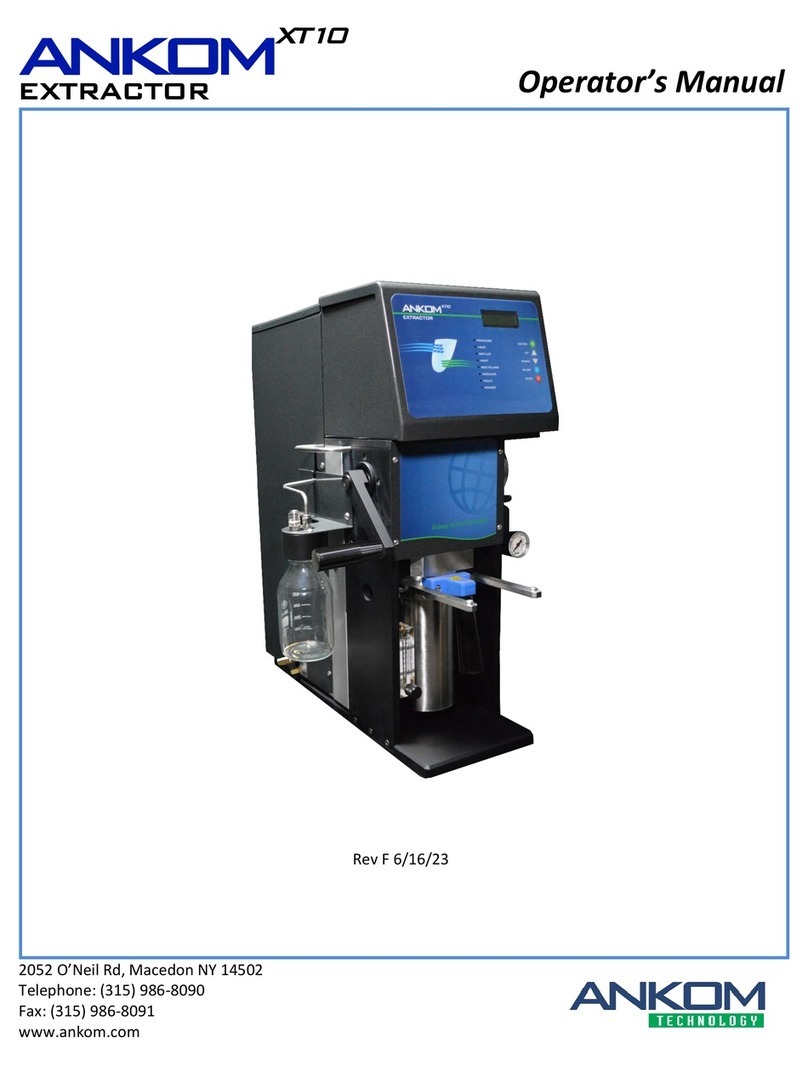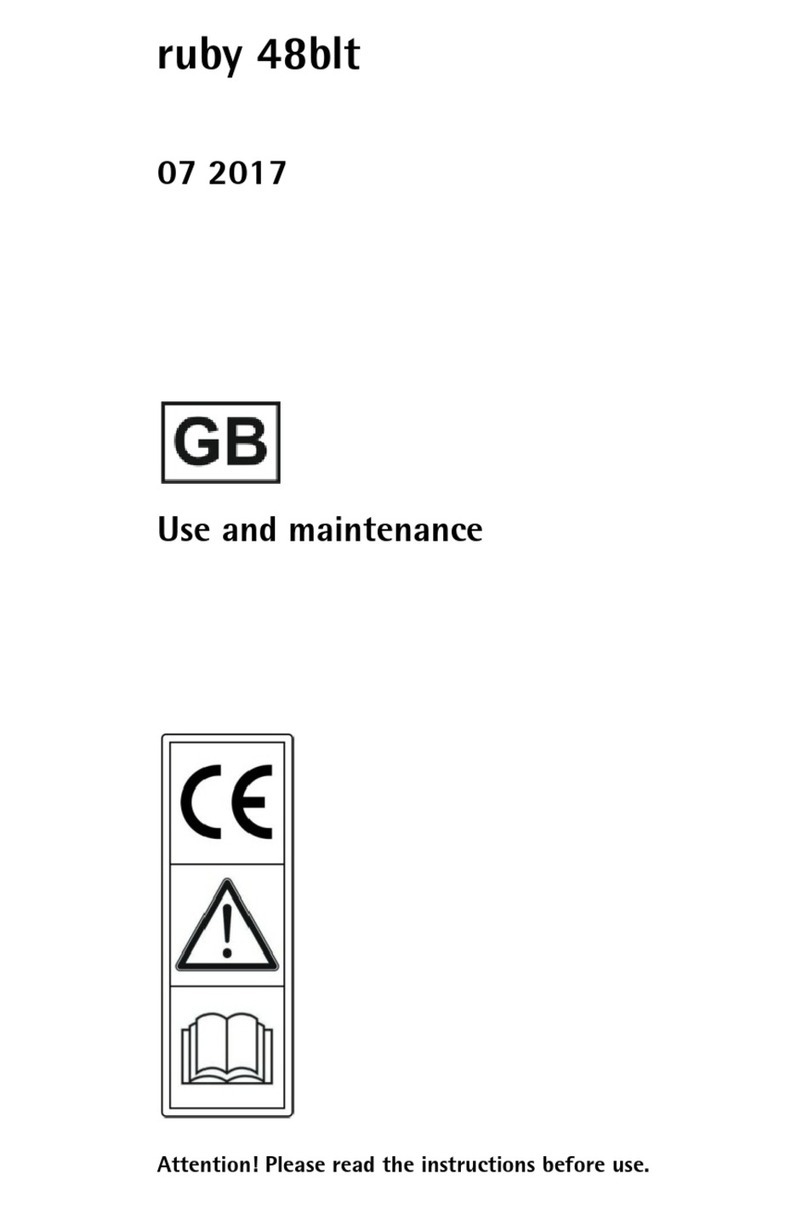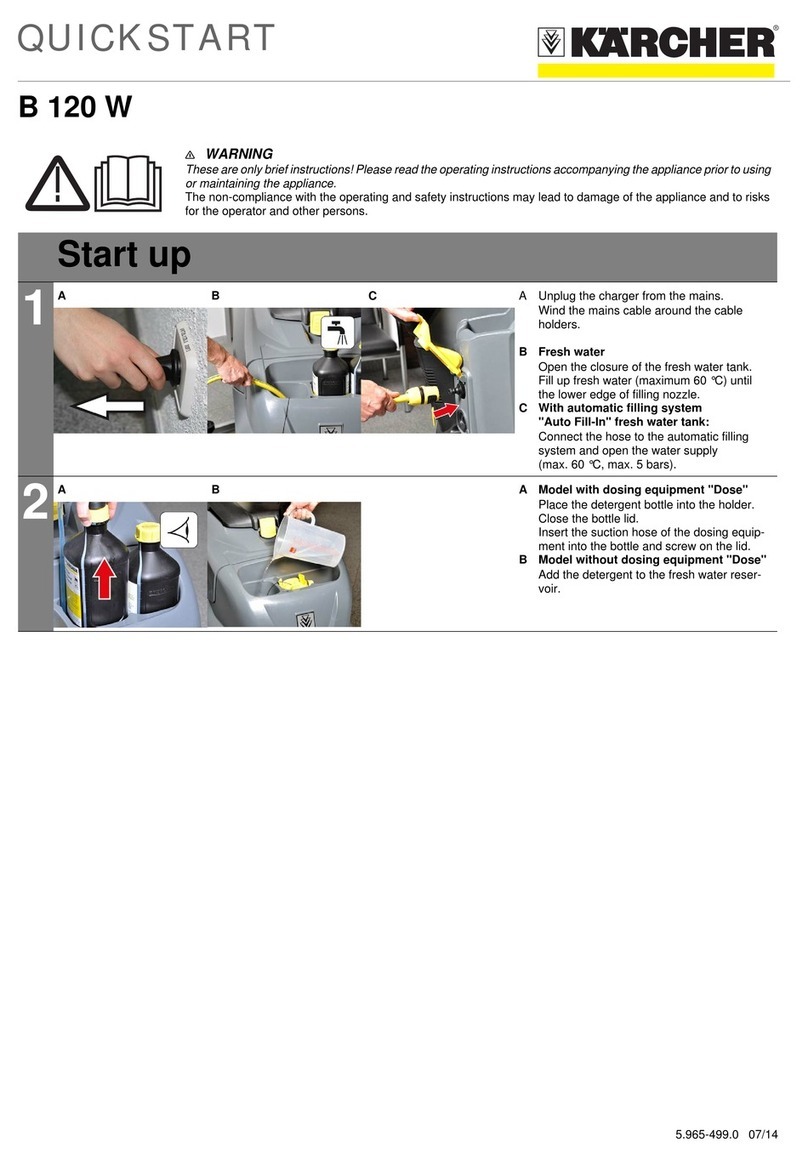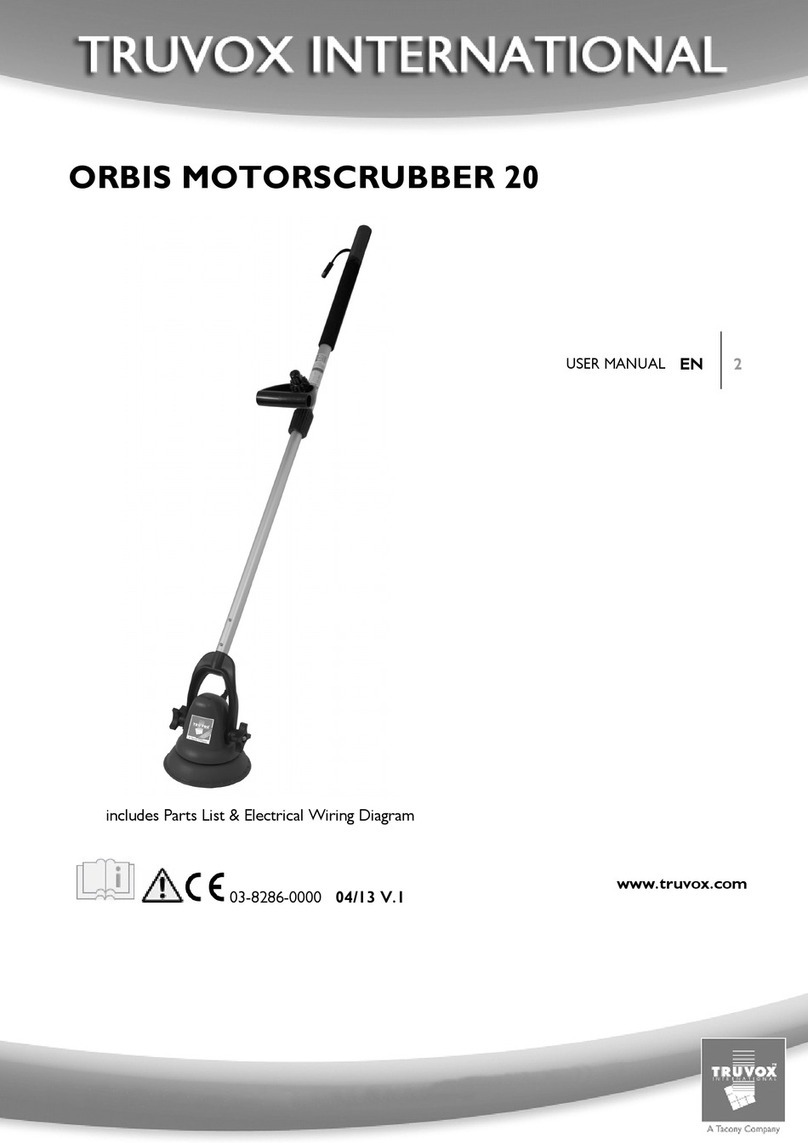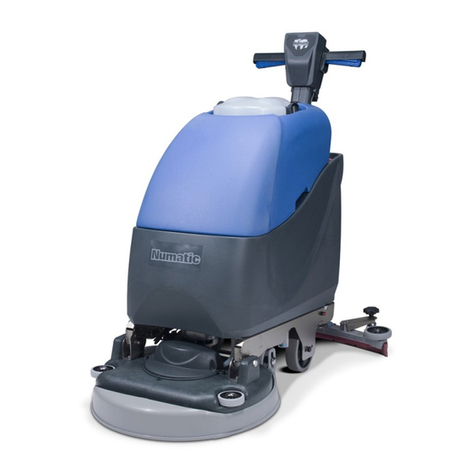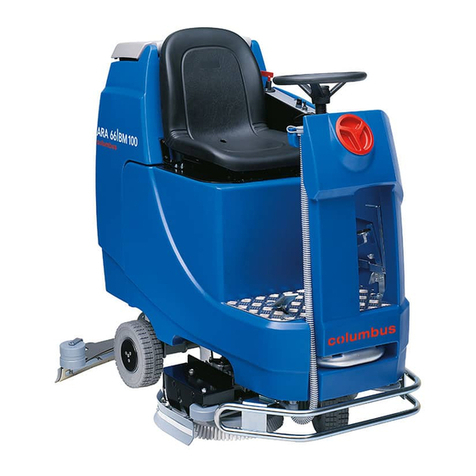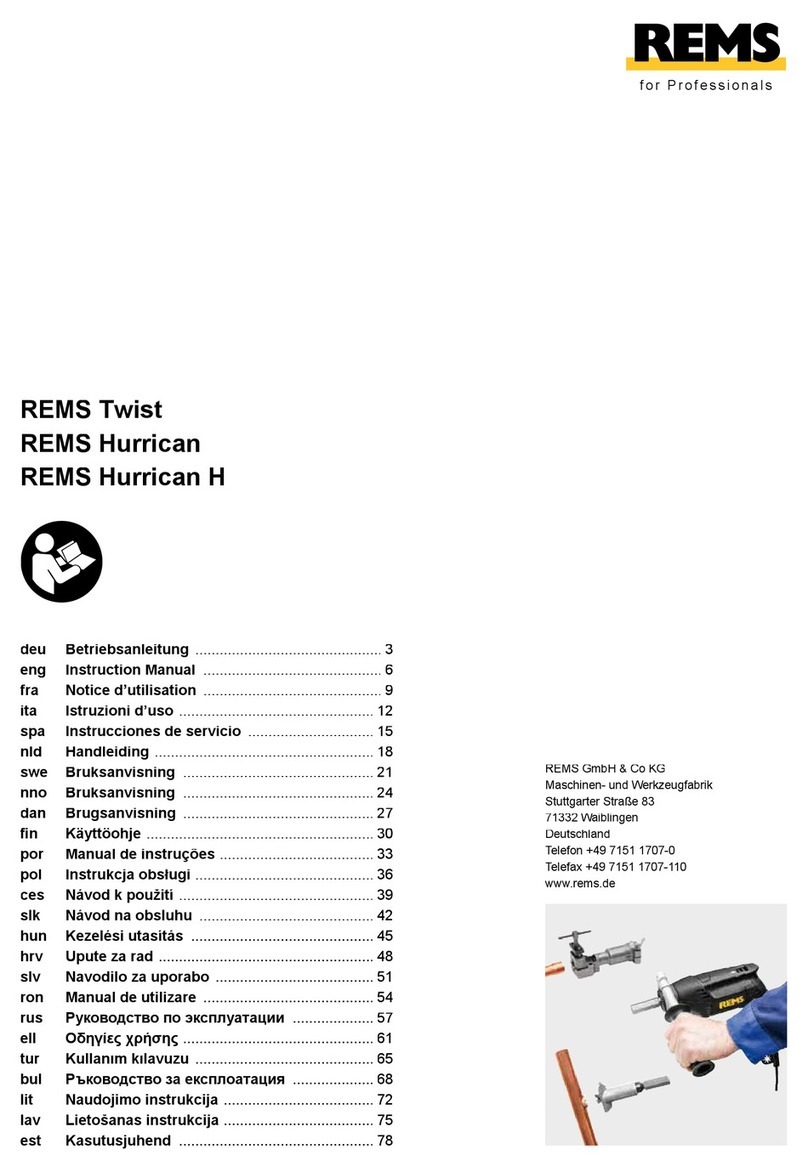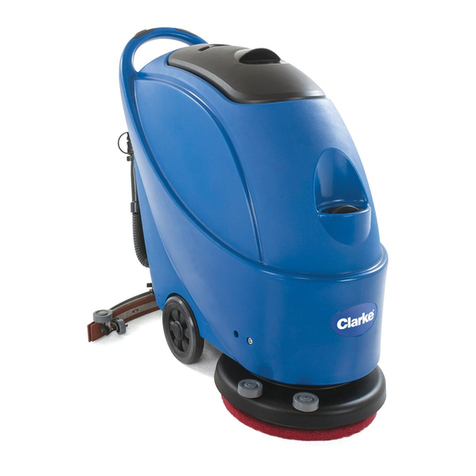
Operator’sManual
RevE4/2/12 pg.5
Introduction
ANKOM Technology designs, manufactures, and markets instruments and support products used by analytical
laboratories around the world in the environmental, agricultural, biomass, and food industries. ANKOM
Technology can provide you with products for determining or monitoring dietary fiber, detergent fiber, fat,
digestibility, microbial fermentation (anaerobic or aerobic) and more.
Committed to Total Customer Satisfaction, ANKOM designs every product based on a thorough assessment of
customer needs.
Congratulations on your purchase of theANKOMXT10 Extraction System.We are confident that this product will
effectively serve your needs.
The ANKOMXT10 Extraction System was designed to automate the process of fat extraction. This reduces
technician variation, increasing precision. By carefully following the operating instructions in this manual you will
understand the details of sample and filter bag handling as well as the instrument controls, helping you to achieve
the best possible results.
Please review the entire contents of this manual before you begin operating this
product.
Warranty
ANKOM Technology warrants the ANKOMXT10 Extraction System against any defects due to faulty workmanship
or material for one year after the original date of purchase. This warranty does not include damage to the instrument
resulting from neglect or misuse. During the warranty period, should any failure result from defects in
workmanship or materials ANKOM Technology will, at its discretion, repair or replace the instrument free of
charge.
Extended warranties are available upon request.
FilterBags
Use only ANKOM Technology filter bags (part # XT4) in your ANKOMXT10 Extraction System. Use of any other
filter mechanism will void the warranty. Filter bags can be purchased from ANKOM Technology or from your local
authorized ANKOM distributor.
OperatingEnvironment
Your ANKOMXT10 Extraction System is designed to operate within the following environments:
Ambient Temperature Range: 15°−35°C
Power: 100V−120V ~ 50/60Hz 10A / 220V−240V ~ 50/60Hz 5A
